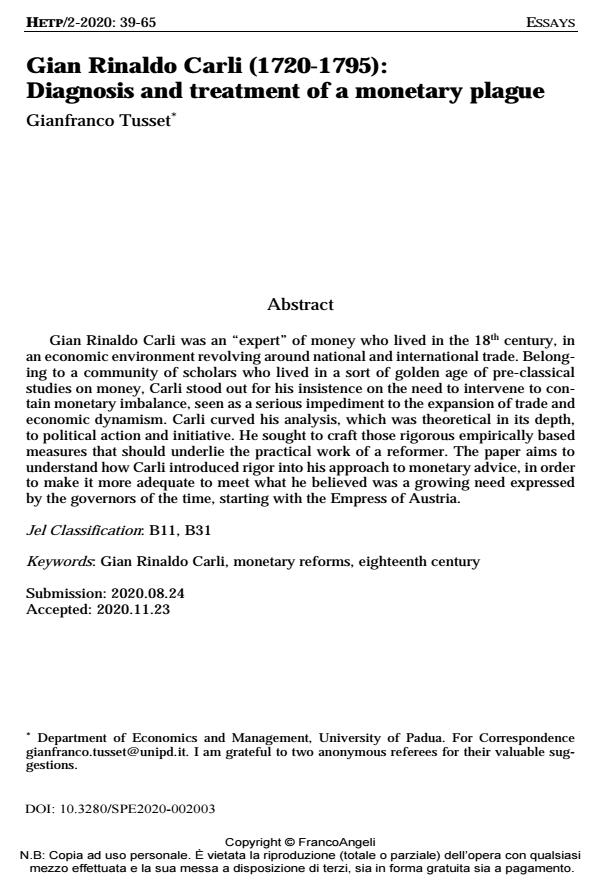Gian Rinaldo Carli (1720-1795): Diagnosis and treatment of a monetary plague
Journal title HISTORY OF ECONOMIC THOUGHT AND POLICY
Author/s Gianfranco Tusset
Publishing Year 2021 Issue 2020/2
Language English Pages 27 P. 39-65 File size 203 KB
DOI 10.3280/SPE2020-002003
DOI is like a bar code for intellectual property: to have more infomation
click here
Below, you can see the article first page
If you want to buy this article in PDF format, you can do it, following the instructions to buy download credits

FrancoAngeli is member of Publishers International Linking Association, Inc (PILA), a not-for-profit association which run the CrossRef service enabling links to and from online scholarly content.
Gian Rinaldo Carli was an "expert" of money who lived in the 18th century, in an economic environment revolving around national and international trade. Be-longing to a community of scholars who lived in a sort of golden age of pre-classical studies on money, Carli stood out for his insistence on the need to inter-vene to contain monetary imbalance, seen as a serious impediment to the expan-sion of trade and economic dynamism. Carli curved his analysis, which was theo-retical in its depth, to political action and initiative. He sought to craft those rigor-ous empirically based measures that should underlie the practical work of a re-former. The paper aims to understand how Carli introduced rigor into his approach to monetary advice, in order to make it more adequate to meet what he believed was a growing need expressed by the governors of the time, starting with the Em-press of Austria.
Keywords: Gian Rinaldo Carli, monetary reforms, eighteenth century
Jel codes: B11, B31
- Price Index Numbers Naohito Abe, pp.9 (ISBN:978-981-97-6304-7)
Gianfranco Tusset, Gian Rinaldo Carli (1720-1795): Diagnosis and treatment of a monetary plague in "HISTORY OF ECONOMIC THOUGHT AND POLICY" 2/2020, pp 39-65, DOI: 10.3280/SPE2020-002003